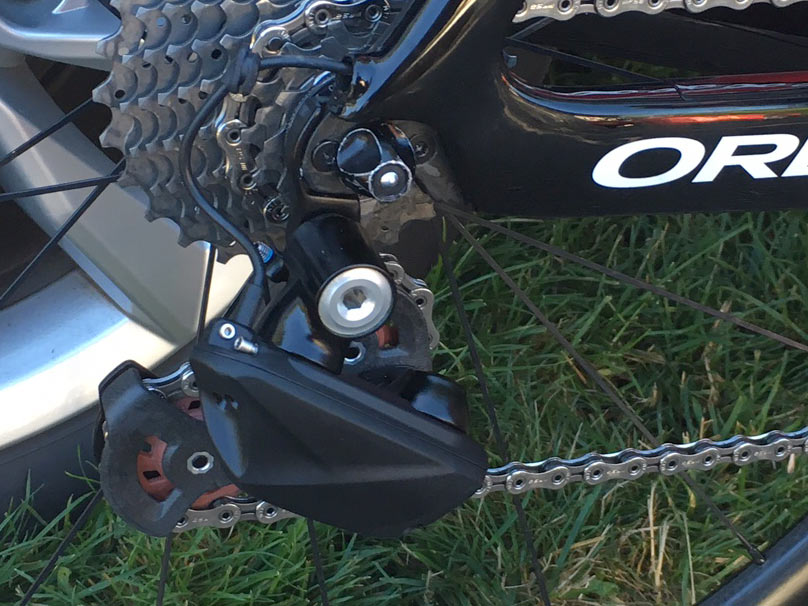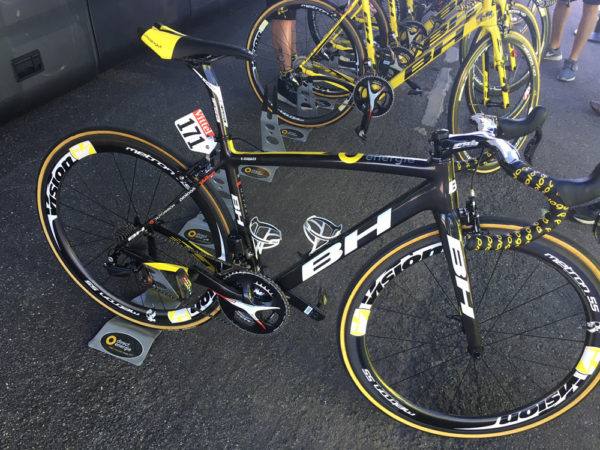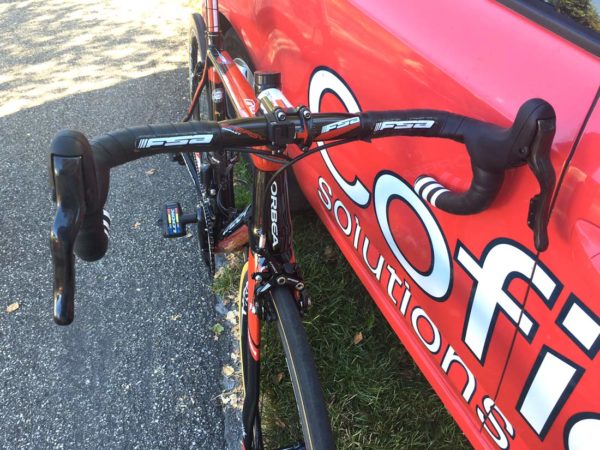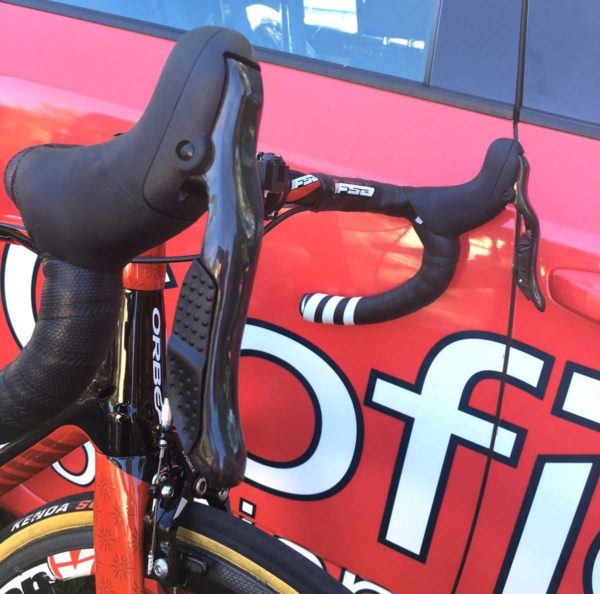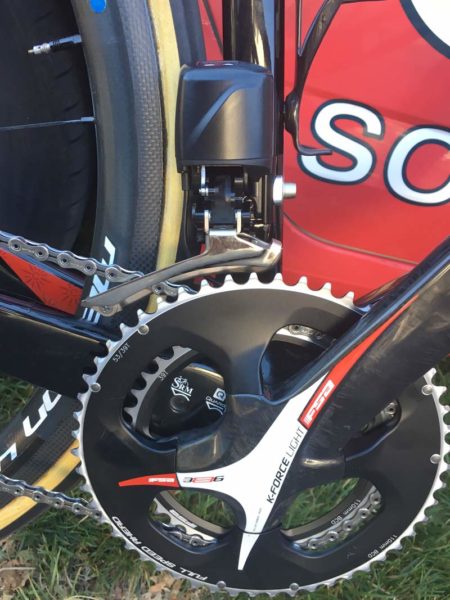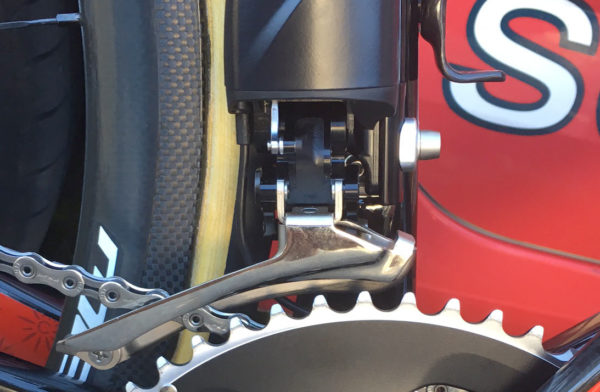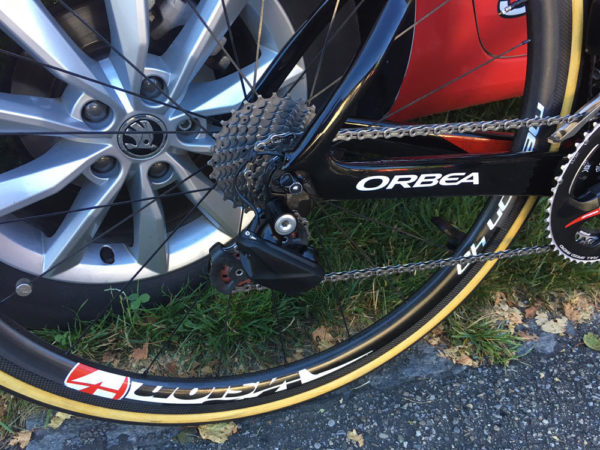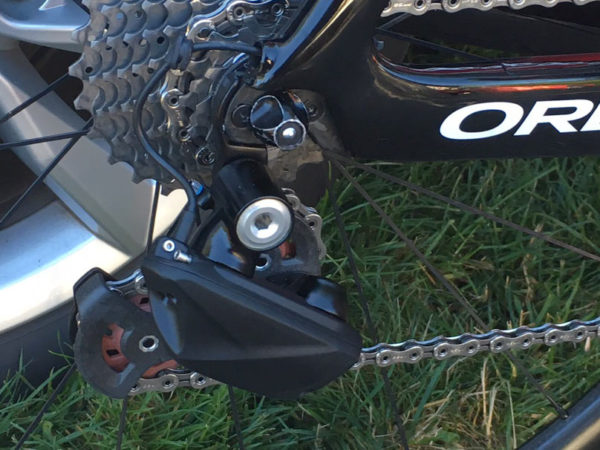Spotted last year later in Le Tour, the FSA electronic shifting group has been further refined and made another late-in-the-game appearance at this year’s Tour de France, too. This time, though, it’s looking nearly production ready and our inquiries to FSA were met with this response: “Make sure you come see us at Eurobike.”
So, they’re not giving up details, but we were able to get these photos from a friendly source that show off some key details…
The brake levers are wide and have a pronounced bend to bring the braking area out where your fingers tend to be when actually riding. The hoods are sized such that we suspect they could house hydraulic braking bits if need be, but the Cofidis and Direct Energie team bikes shown here were all running rim brake calipers.
The shifter buttons look to be on a rocker panel, putting up and down shifting in close proximity to each other. The one on top of the other layout could be their way of working around competing patents.
Unless they’re playing the same games SRAM did, then it’s a wired system, putting the motor on top of the front derailleur. Just barely visible on the top of the motor case are what could be indicator lights or adjustment buttons.
The parallelogram links appear to be robust, as does the motor based on the housing’s size.
